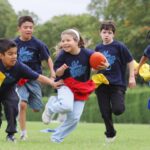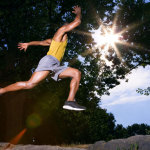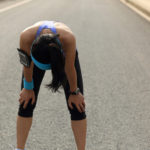Athletes and the “Knee Crisis”
If Tiger Woods was completely honest should he ever be asked what would prevent him from eclipsing Jack Nicklaus’ major championship record, he might answer, “A knee injury.” After all, his present comeback from a significant knee injury wasn’t his first encounter with knee ailments. Knee pain is a common affliction for many amateur and professional athletes from nearly every sport.
The knee is a fragile joint, not built with big muscles and large sockets. It is a delicate juncture hanging from the thigh bone by merely a few ligaments. While it is designed to bend forward, then back to its original position, it can unnaturally move left to right, putting stress on the joint. Because of this, the knee is one of the most often injured joints in the world of sports. Thoroughbred horses are often called million dollar animals on ten-cent legs. The same could be said of human beings because of the knee. In fact, Dr. Brian Halpern, a sports-injury specialist at Hospital for Special Surgery in New York, has gone so far as to declare a “Knee Crisis.”
According to Dr. Halpern, to help prevent knee injury we can stretch and strengthen. Here are some of his suggestions.
Stretch
Daily stretches will help keep the knees in shape for the demands sports and competition. Here’s one you can perform at home.
Stand with one leg in front of, and crossed over, the other leg. Exhale, and bend your body to the same side as your front leg. Hold for a count of 20, straighten up, then repeat the bend nine more times. Reverse leg positions, and repeat 10 times in the other direction.
Strengthen
When your quads are strong, they will provide better knee support. Here’s a daily exercise for strengthening the quadriceps.
With your feet side-by-side, extend both arms forward and slowly lower yourself into a half-squat, stopping before your legs are parallel to the ground. Keep your back straight. Repeat 20 times.
Treating the Pain
If you have knee pain, ensure the footwear being worn is appropriate. In many sports, such as golf, soccer, baseball and football, special spikes or cleats are typically worn, which can cause excess torque. Changing to shoes without spikes will often reduce twisting and excess torque, which causes most knee pain and injuries, and won’t significantly impair performance. Ice the knee when you get home, and take anti-inflammatories. When the pain is gone, go back to stretching and strengthening, but do it gently and carefully so as to not re-aggravate the injury.
Before long, the field of play will again be ripe for the conquering and the knees will be like new. They’ll thank you for the conditioning.
Source: Hospital for Special Surgery, New York.
Disclaimer: SportsMD Media Inc. does NOT offer medical advice. The content on this website is for informational purposes only. Do not rely or act upon information from www.sportsmd.com without seeking professional medical advice. Consultations on SportsMD.com are not a substitute to physical consultation with a doctor or hospital services. The service should not to be used for medical emergencies. Do not delay seeing a doctor if you think you have a medical problem. In case of a medical emergency, call 911.





